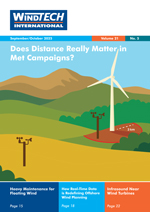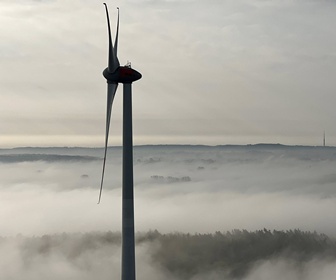- Category: Articles
 The Blade Way Concept
The Blade Way Concept
During the past few years the market for servicing existing wind turbines has grown rapidly. One of the more significant market segments is for exchanging blades. Commonly, large mobile cranes are used, together with a blade yoke. The costs associated with the use of a crane are high, and so cheaper solutions are being sought.
By Per Fenger and Ruben Tjell Lambertsen, Liftra, Denmark
- Category: Articles
Advanced Modelling Makes This Possible Without Compromising Safety
 Unlike wind turbine towers and rotors, which are fabricated under controlled conditions, in general foundations must be tailor-made. This is because soil conditions (hard or soft) and available space dictate the solutions for the foundation. However, the perception is that optimisation of foundation designs leads to higher risk. Maybe due to this the average foundation designer takes a simple, conservative and conventional design approach. But a client should look at things in a different way. Saving money is one thing, saving materials and reducing CO2 emissions is another. A client should aim to have an optimised design. The skills and experience are available and have shown that substantial design optimisations are possible, without increasing risks.
Unlike wind turbine towers and rotors, which are fabricated under controlled conditions, in general foundations must be tailor-made. This is because soil conditions (hard or soft) and available space dictate the solutions for the foundation. However, the perception is that optimisation of foundation designs leads to higher risk. Maybe due to this the average foundation designer takes a simple, conservative and conventional design approach. But a client should look at things in a different way. Saving money is one thing, saving materials and reducing CO2 emissions is another. A client should aim to have an optimised design. The skills and experience are available and have shown that substantial design optimisations are possible, without increasing risks.
By Axel Jacobs, Civil Consultant Wind Energy, ABT, The Netherlands
- Category: Articles
A Monolithic Concrete Platform for Floating Offshore Wind Turbines
 A novel concept of a floating platform for supporting wind turbines (named WindCrete) has been developed at the Universitat Politècnica de Catalunya (UPC) in order to substantially reduce the capital expenditure or CAPEX for floating offshore wind turbines. The concept is based on a monolithic full concrete structure, including the tower and the floater, which also allows a significant reduction of the operating expense, or OPEX. The basics of the concept are presented in this article, including the advantages of concrete in the marine environment, the main dimensions and the hydrostatic and hydrodynamic properties of WindCrete.
A novel concept of a floating platform for supporting wind turbines (named WindCrete) has been developed at the Universitat Politècnica de Catalunya (UPC) in order to substantially reduce the capital expenditure or CAPEX for floating offshore wind turbines. The concept is based on a monolithic full concrete structure, including the tower and the floater, which also allows a significant reduction of the operating expense, or OPEX. The basics of the concept are presented in this article, including the advantages of concrete in the marine environment, the main dimensions and the hydrostatic and hydrodynamic properties of WindCrete.
By Climent Molins and Alexis Campos, Universitat Politècnica de Catalunya, Spain
- Category: Articles
Effective Reduction Using a Low-Speed Coupling Made of Advanced Composites
 Poor drive-train reliability is still one of the main hurdles to get over in order to achieve a more competitive cost for wind energy. Many surveys confirm that gearbox failure rates are moderate compared to other components but, once a failure occurs, it leads to the highest downtime and a considerable loss of energy production. According to the results of investigations carried out by GL Garrad Hassan regarding the relative cost of energy, the reduction of gearbox failures rates by 50% would save revenue losses by almost 40% compared to the initial capital cost of the gearbox. Joint investigations by the National Renewable Energy Laboratory (NREL) and Alstom, with the target of improved drive-train reliability, have shown that non-torque loads (bending moments) can significantly affect the reliability of the gearbox. Non-torque loads are caused by aerodynamic loads, rotor overhung weight and drive-train weight, and occur independently of the drive-train concept. Low-speed couplings are pictured as a potential remedy for new drive-train layouts to solve the problem ‘outside the gearbox’.
Poor drive-train reliability is still one of the main hurdles to get over in order to achieve a more competitive cost for wind energy. Many surveys confirm that gearbox failure rates are moderate compared to other components but, once a failure occurs, it leads to the highest downtime and a considerable loss of energy production. According to the results of investigations carried out by GL Garrad Hassan regarding the relative cost of energy, the reduction of gearbox failures rates by 50% would save revenue losses by almost 40% compared to the initial capital cost of the gearbox. Joint investigations by the National Renewable Energy Laboratory (NREL) and Alstom, with the target of improved drive-train reliability, have shown that non-torque loads (bending moments) can significantly affect the reliability of the gearbox. Non-torque loads are caused by aerodynamic loads, rotor overhung weight and drive-train weight, and occur independently of the drive-train concept. Low-speed couplings are pictured as a potential remedy for new drive-train layouts to solve the problem ‘outside the gearbox’.
By Alexander Kari, Geislinger GmbH, Austria
- Category: Articles
Could It Change the Game for Renewables?
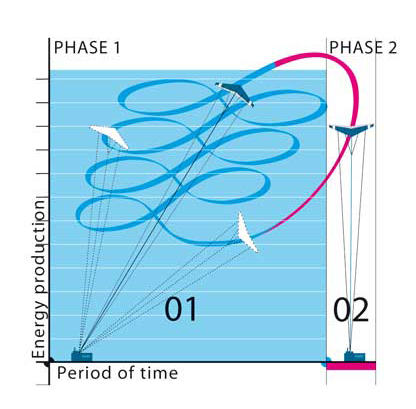 What if reliable and cheap wind energy could be generated, stored and distributed straight out of a box? EnerKíte GmbH from Germany has developed a novel technology to harness the stronger and steadier winds at higher altitudes. At average to fair onshore wind conditions the kite-based wind power plants – or airborne wind energy converters – allow for capacity factors way above 70% while aiming to keep the cost of electricity below 5 euro-cents per kilowatt-hour. The combination of stronger winds at higher altitudes and the low design wind speeds of 7.5m/s enable capacity factors higher than offshore power plants at a lower cost. Distributed generation, storage and hybridisation with other renewables could all help towards 100% renewable scenarios.
What if reliable and cheap wind energy could be generated, stored and distributed straight out of a box? EnerKíte GmbH from Germany has developed a novel technology to harness the stronger and steadier winds at higher altitudes. At average to fair onshore wind conditions the kite-based wind power plants – or airborne wind energy converters – allow for capacity factors way above 70% while aiming to keep the cost of electricity below 5 euro-cents per kilowatt-hour. The combination of stronger winds at higher altitudes and the low design wind speeds of 7.5m/s enable capacity factors higher than offshore power plants at a lower cost. Distributed generation, storage and hybridisation with other renewables could all help towards 100% renewable scenarios.
By Alexander Bormann, CEO, EnerKite, Germany
- Category: Articles
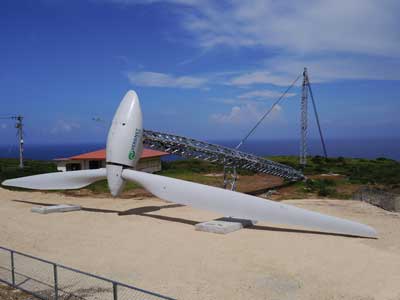 Getting Ready for the Future
Getting Ready for the Future
Within a few years there are not likely to be many places in the world with traditional mega or micro electricity grids. As use of renewables such as wind and especially photovoltaics increases, sometimes to more than 100%, and the energy supplies are linked to grids worldwide, there will be a need to add storage and smart control systems to enable switches between renewable energies and other fuels such as diesel. However, most traditionally manufactured small and medium wind turbines cannot cope with smart grids.
By Frits Ogg, Renewable Energy Consultant, The Netherlands
- Category: Articles
Anemometry Technology to Measure the Wind in Front of the Rotor
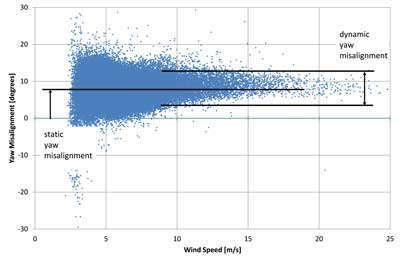 The ROMO Wind iSpin system uses proven ultrasonic technology to measure wind where it first hits the turbine – directly at the spinner. In this way, it is able to measure parameters at the nacelle which until now have been difficult or impossible to measure accurately. Operators gather exact information on the wind conditions in front of the rotor including wind speed, yaw alignment, flow inclination, turbulence, rotor position and temperature. This enables them to check whether their turbines are aligned for the best possible yield. At the same time, the data allows for optimised wind farm management and load reduction, which prolongs the total life of the turbines.
The ROMO Wind iSpin system uses proven ultrasonic technology to measure wind where it first hits the turbine – directly at the spinner. In this way, it is able to measure parameters at the nacelle which until now have been difficult or impossible to measure accurately. Operators gather exact information on the wind conditions in front of the rotor including wind speed, yaw alignment, flow inclination, turbulence, rotor position and temperature. This enables them to check whether their turbines are aligned for the best possible yield. At the same time, the data allows for optimised wind farm management and load reduction, which prolongs the total life of the turbines.
By Harald Hohlen, ROMO Wind Deutschland GmbH, Germany



